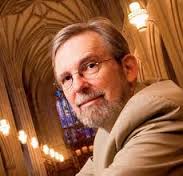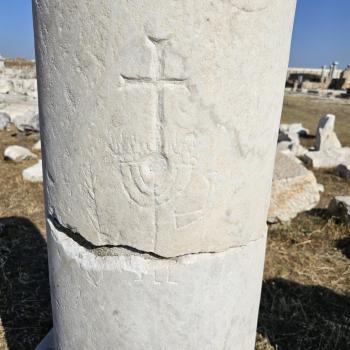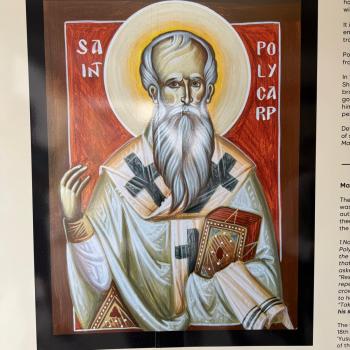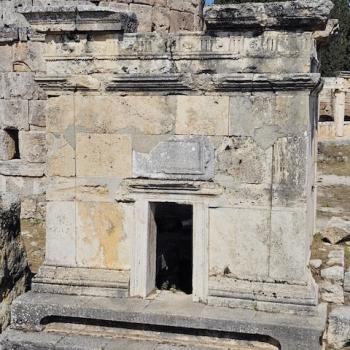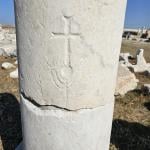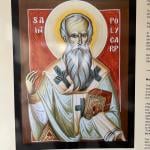In the Gospel of John the suggestions that ‘Moses’ (and the prophets)spoke about Jesus are repeatedly in evidence (Jn. 1.45). Jesus does not denigrate or dismiss Moses, rather Moses is said to testify about Jesus. “There is a fateful circularity here: reading the writings of Moses should lead to believing in Jesus; but in order to understand Moses words, one must first come to Jesus to receive life.” (p. 77). Furthermore, one has to enter this hermeneutical loop at the very point this Gospel says you must– at the point of believing in Jesus (see the purpose statement in John 20). One doesn’t read backwards for its own sake, or even just for the benefit of hindsight producing new insight. One does so because the Christ event is a new revelation impart in and through Jesus, and without that new revelation the old is said to be not fully comprehensible. In this Gospel (Jn. 5.46) Jesus emphatically says Moses wrote about me. But you wouldn’t know this if you don’t know Jesus, the Logos.
It is interesting that John’s Gospel, as overt as its Christology is, only has perhaps between 13-17 explicit quotations, and if you count phrases and some allusions maybe 27 compared to 124 in Mt., 70 in Mk., and 109 in Luke. Richard draws an analogy between John’s use of Scripture and Rembrandt’s use of light and dark. Instead of quotations John relies on images and figures from Israel’s past and Scriptures. (p. 78). But sometimes a dramatic image involve the image from one text and some of the key language from another— so for example the reference to Jesus being lifted up like the golden serpent in the wilderness, is an allusion to Num. 21, but the verb ‘lifted up’ seems to be lifted from Is. 52.13 LXX.
Very interesting is Hays analysis of the quotation formulae in John. In John 1-12, the so-called book of Signs, we have ‘as it is written’ or ‘it is written in the prophets’ or ‘as Scripture said’ (1.23;2.17;6.31;6.45;7.38; 7.42; 10.34; 12.14) but thereafter all the important citations are introduced with a fulfillment formula using plerpo-o. (p. 79). 12.39, and 19.37 are minor exceptions to the rule but they serve as end markers for the Book of Signs, and the Book of the Passion indicating that portion of the story is drawing to a close. There are no Scriptural quotes in John 20-21. I entirely agree with Hays (p. 80) that this shift in language has to do with the need for apologetics in regard to the surprising demise of Jesus by crucifixion. The point is it was part of the divine plan all along, not an unforeseen disaster, a divine design brought to completion when Jesus himself says ‘it is finished’ and then expires.
Another interesting insight is that about 60% of the Scripture cited in John comes from the Psalms, again not surprising since there is such a focus on the passion and death of Jesus. Even in John 19.36 while Exod. 12.46 may be drawn on (or Num. 9.12), there are echoes of Ps. 34.20 as well, which means that even Moses is filtered through the Psalms, and it is the Psalms which help explain the passion events.
Hays wants to stress that Jesus does not replace or nullify the institutions of Judaism with himself, rather he assumes and transforms them (p. 82). However one could respond that if he assumes and transforms them without remainder, then of course he has superceded them, which is in fact a form of replacement. Jesus is the passover lamb, he is the temple, the new locus of God’s presence, and so on. Or as Hays wants to say, Jesus is not only the Temple he is also the God who meets us in the Temple.
I am happy to see Richard stress the allusions to personified Wisdom in John 1ff.on pp. 83ff. and that whole trajectory of thought which comes to culmination in Jesus (see my Jesus the Sage). As Hays says, not only Scripture but the very words of Jesus are enigmatic until after the res. (see John 2.17,22). Note the parallel between believing the Scripture and also the words which Jesus said, both treated as sacred texts. John 14.25-26 makes clear it is the the Holy Spirit who helps the disciples recall and interpret the sayings of Jesus, and the Scriptures for that matter. John 2.13-22 is seen as an hermeneutical key as it encourages the conclusions that: 1) right reading of the Scriptures can only be done in light of and after the resurrection; 2) there must be a figural reading of the OT, if Jesus is the temple, the passover lamb etc. The link between Jesus’ body and the temple makes clear one must connect the dots of the OT through Jesus a Christological reading of the OT.
John 6 also becomes a key text for such figural readings. The manna in the wilderness story (Exod. 16 retold in Ps. 78.24) prefigures the feeding of the 5,000, but the point is made that the crowd misinterprets the OT analogy. It wasn’t Moses who gave them the bread it was God, and what this tells us about Jesus is that ‘something greater than Moses is here’. (pp. 90-91). The literal bread in the previous story prefigures Jesus’ own body, for Jesus is ultimately the really soul-nourishing bread which comes down from heaven. Thus Hays concludes that more than the Synoptic writers, John understands the OT as a vast matrix of symbols pointing to Jesus, symbols which prefigure Jesus and the life he offers (p. 92).
In our next posts we will interview Richard about the book, and then conclude by dealing with his conclusions.


